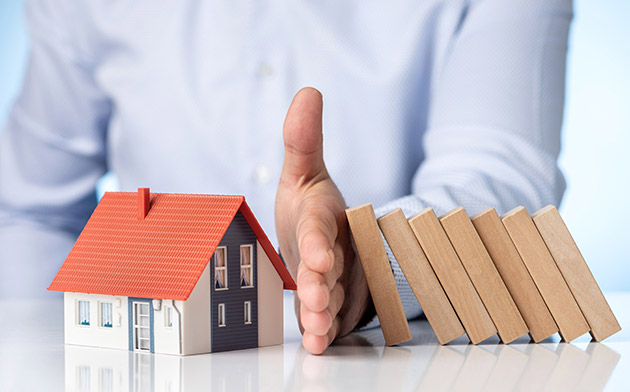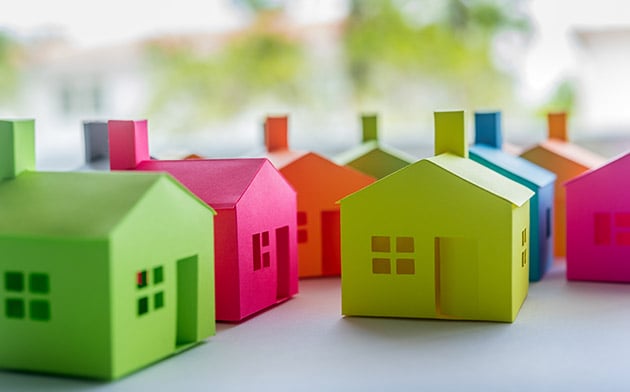Is your home as efficient as it could be?
Drafty windows. Leaky faucets. Inefficient light bulbs. Energy-sapping appliances and electronics.
Just a few causes of decreased energy efficiency and higher utility bills. But by exercising a little due diligence, those problems can be tempered significantly.
 Making your home more efficient can seem like an overwhelming—not to mention costly—task. But when you consider that the Environmental Protection Agency’s Energy Star program estimates homeowners can save nearly $9,000 over the life of products like major appliances, heating and cooling equipment, lighting, office products, and home electronics. If you’re not in a position to buy the latest-and-greatest appliances, a simple audit of your energy efficiency can yield effective and cost-efficient solutions.
Making your home more efficient can seem like an overwhelming—not to mention costly—task. But when you consider that the Environmental Protection Agency’s Energy Star program estimates homeowners can save nearly $9,000 over the life of products like major appliances, heating and cooling equipment, lighting, office products, and home electronics. If you’re not in a position to buy the latest-and-greatest appliances, a simple audit of your energy efficiency can yield effective and cost-efficient solutions.
Follow this do-it-yourself home-energy audit to identify unnecessary energy loss in your home, how efficient your heating and cooling systems are, and ways you can decrease your electricity use. When you’re done, note the problems you find, keep your home’s efficiency in mind, and get used to big savings.
Where's the air?
Air commonly leaks through gaps around windows or doors, baseboards, and electrical outlets. These are generally easy to detect on your own, and stopping them can cut down your yearly energy costs by up to 30 percent. If you aren’t able to fit new energy-efficient windows into your budget, adding weather stripping around the frames or applying shrink-wrap to the windows’ surface will help. Don't forget to check your home’s exterior as well, paying close attention to areas in which two different building materials meet. When you find leaks, seal them with caulk or weather stripping.
Don't wait ... insulate
Determine whether the amount of insulation in your ceilings and walls is sufficient. Your attic door should be insulated and close tightly. For walls, make a small hole in a closet or other inconspicuous place and probe into the wall with a screwdriver—the area should be completely filled with insulation. If you need more insulation, one of the most common ways to get more installed is to have it blown in. If you’re a true do-it-yourselfer, most home-improvement stores have rental blower units on hand. For the rest of us, hiring a professional is more optimal. The average cost to have your house re-insulated is about $1,800, but this can vary widely.
Systems check
Efficient heating and cooling systems can save you frustration as well as money. Make sure ducts and pipes are insulated properly, and have your equipment inspected and cleaned by a professional each year. Annual checkups involve ensuring connections are properly tightened, parts are lubricated, and coils are cleaned; even better, these tune-ups can help you potentially avoid replacing your furnace, which, on average, can set you back nearly $5,000. And don’t forget the filters. For forced-air furnaces, filters should be replaced as soon as they’re dirty, or every 30 to 60 days.
Let there be (efficient) light
Lighting can account for up to 20 percent of your home’s total electricity use. In 2014, manufacturers stopped making 60-watt and 40-watt incandescent light bulbs. So if you still have some, recycle and replace them with compact fluorescent lamps (CFL) or light-emitting diodes (LED), which last longer and use far less energy.
Don’t feel like doing any of this on your own, or looking for a more comprehensive energy audit? Consider a professional home-energy assessment. Once your DIY or professional audit is complete, there are myriad ways to maintain an efficient home. Among the low-cost (and no-cost) changes are lowering your thermostat while not at home, unplugging unused chargers, and installing low-flow showerheads. Bigger-ticket items include installing solar panels and storm doors and even replacing your computer every few years.
So roll up your DIY sleeves, turn on HGTV for inspiration, and get to it. Not only will you enjoy extra savings—a well-maintained home also means a safer home that you can feel comfortable in for years to come.


